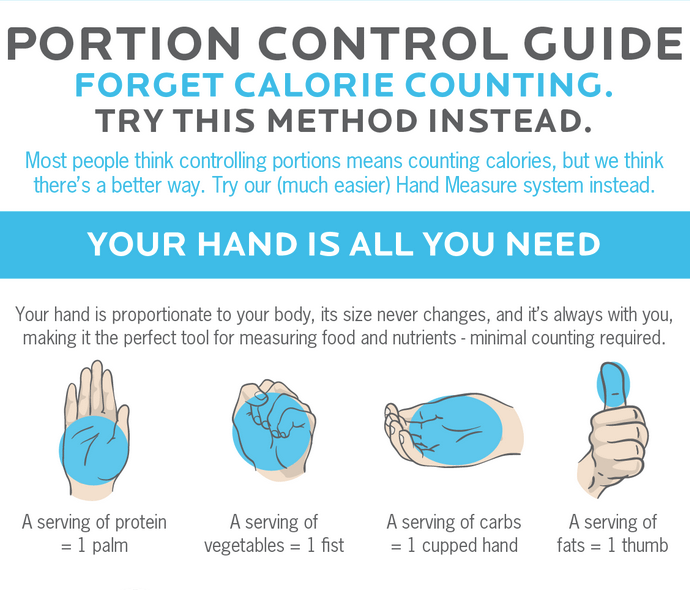If you’re trying to eat healthier, you already know you should be including lots of fruit, vegetables, lean protein, and whole grains.
But when you step into a grocery store, things get a bit more complicated. The majority of store shelves are crammed with a tempting assortment of pre-packaged and convenience foods.
So, how do shoppers know which foods are healthy options?
Most people turn to nutrition and health claims found on food packaging labels to help them decide which products to pick and which to skip.
You may think you’re doing a good thing adding “healthful” sounding foods to your cart – but in reality, you may end up taking in way more calories, sugar, and unhealthy ingredients than you intend!
This is because most product nutrition claims don’t mean a heck of a lot when it comes to the actual healthfulness of a food.
Healthy sounding claims are actually a marketing trick used by food manufacturers. Nutrition buzzwords – i.e. “natural, organic, paleo, low in calories/fat/sodium” – are intentionally used to help convince you to buy.
This concept is known as a health halo – the perceived healthfulness of a product based on a single quality or health claim.
And it works!
Here’s what happened when the Health Halo was studied…
One study offered participants two samples of yogurt, cookies, and chips labeled “organic” and “regular.” Participants believed the organic foods were lower in calories and tasted better and healthier compared to the regular foods.
The catch? Both the organic and regular samples were the exact same organic foods! Proving the power of slick marketing!
Some researchers also conclude consumers experience less guilt when they believe they’re choosing a healthy option, which then justifies larger portion sizes and increased calorie intake.
The 2 most common nutrition claims that contribute to health halos?
There are two buzzwords that are often aligned with making a healthful food choice that we want to highlight as they’re so commonly used – but they’re also 2 of the most misleading!
FAT-FREE/LOW-FAT/REDUCED FAT
Shoppers tend to believe “low in fat” equates to low in calories. Not the case!
When fat is removed from a food, it’s usually replaced with unhealthy ingredients (think chemicals) and sugar (usually lots of it!) to improve texture and flavour.
All that added sugar can increase calorie count big time (hellooo bigger waistline) AND end up being worse for your health overall than if you’d just had a bit of the full-fat original!
Common examples of reduced-fat foods perceived as healthy include yogurt (flavoured varieties are loaded with added sugar and other fillers), bottled salad dressing, peanut butter (think cute teddy bears or squirrels), and commercially baked snacks, like crackers, muffins and cookies.
GLUTEN-FREE
The term “gluten-free” has become synonymous with healthy – whether you need to avoid gluten for a bona fide health reason or not!
Gluten-free does NOT equate to low-carb, low-calorie, whole grain, high fibre, low sugar, or organic.
Remember: gluten is a protein found in wheat, spelt, kamut, rye, and barley. A gluten-free food doesn’t contain any of those grains that contain gluten – that’s it!
Yet, you’ll see “gluten-free” slapped on the labels of foods that NEVER contain these ingredients to begin with.
Case in point? Potato chips.
Potato chips (should) contain potatoes, oil, and salt. There are generally no gluten-containing ingredients in chips, but food manufacturers still utilize the “gluten-free” label freely to help drive sales.
And no, sorry, eating an entire bag of fried potato chips isn’t a healthy option – even if the bag reads “gluten-free”. Gluten-free chips, cookies, and snack foods are still chips, cookies, and snack foods.
How to Avoid Falling for Health Halos
On a positive note, just because a food (or food-like) product features a health halo-type claim doesn’t mean you can’t have it. It just means you shouldn’t overestimate the healthfulness of a product based on a word or two!
Here are 4 tips for how to NOT falling for those alluring products…
1. Read nutrition labels…very carefully. Investigate the calorie, fat, and sugar content per serving to determine whether a food is the best choice for your health goals.
2. Read ingredient lists….very carefully. For example, if you’re trying to eliminate added sugars, you’ll want to steer clear of any products that list some form of sweetener in the first few ingredients.
3. Pay attention to portion sizes. Stick to a single serving and measure if you’re tempted to overeat. Did you know that the average person generally eats 2-3 times the normal portion size for carbohydrate-heavy and/or salty snack foods? Eek!
Use a “what is a portion size” resource like this one from Precision Nutrition: https://www.precisionnutrition.com/calorie-control-guide-infographic
4. Prepare your own snacks. Avoiding pre-packaged snacks helps you control ingredients. How about trying your hand at baking your own veggie “chips.”

RECIPE:
We know you’ve probably seen numerous recipes for kale chips – but have you actually tried them? They’re incredibly easy to make and even yummier to inhale all in one sitting ;). I was really skeptical myself before I tried them)))). Now my whole family asks to make them!
Oven-Baked Kale “Chips”
Ingredients
1 large bunch kale, washed and thoroughly dried
1 tbsp olive oil OR avocado oil
1 tsp sea salt
Preparation
- Preheat oven to 325 degrees.
- Remove stems from kale leaves and discard. Tear remaining kale leaves into bite-sized pieces.
- Toss kale leaves with oil and sea salt. Spread on parchment lined baking sheet. Bake till edges begin to crisp, about 15-20 minutes. Watch closely so as to not let the “chips” burn!
- Serve warm right from the oven.
REFERENCES
Food Quality and Preference, 2013: You taste what you see: Do organic labels bias taste perceptions?
Healthline: How Food Labels Can Suck Us Into the ‘Health Halo’
Health Writer Hub, author Dinethra Menon: The ‘Health Halo’ Effect – Perception and Myth
NIDDK: Just Enough for You – About Food Portions

